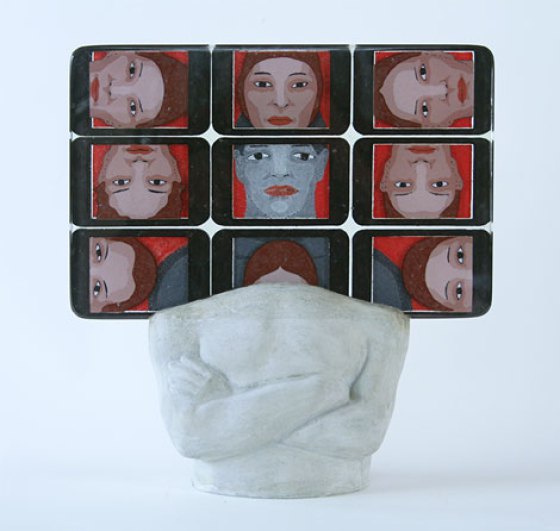It is as if a wall immediately pops up when there is a conversation about some multi-dimensional art work, although those works do not usually require a wall, instead a free windowsill or the top of a cupboard is more than enough. I myself have, as a result of years of observation, created a theory about the discomfiture of sculptures amongst Estonians, which absolutely does not claim for credibility, but it is the following: reformations and Lutheranism have ruined our relationship with all kinds of figures, because unlike societies that have practiced Catholicism, this relationship is much happier and more free compared to what I see around me. Let us even look at the bigger and social picture – since the restoration of independence, there has, almost periodically, been some kind of (let us be honest) trouble with some monuments or pillars. The fact that the symbols of power of other rulers are attacked in the event of regime change is a frequently occurring notion and not just in our neighbourhood. Estonia has, maybe because it is small, gotten almost general popular measures for the erection of a monument. It often appears that the object is in the wrong place, transmits an incorrect message, is made of the wrong material, and whatever else. The most interesting thing is that it does not become just a problem of art critics, architects or other professionals, but it is often taken apart (sometimes literally) by politicians, society activists, semiotics – and at last if every last inhabitant has been included in the discussion and jubilee tables have heated debates not just about who should get Einar’s summerhouse after his death, but about who and where should the next monument be erected. These discussions are not, of course, only connected to the art side of the particular objects, and this topic is often used to spread their ideological principles and fulfil their political agenda. By looking at it this way, we are downright monument people and could prepare an export article about this expertise... At the same time there is a cautionary and a scary precedent in our recent history, in which half of the city was beaten up because of a sculpture, so actually there is nothing to gloat about. Art could be a very explosive substance if we mix it with politics.
Even so, let us try to look at the bright side, which also makes the sculpture wonderful in that it can be viewed to an extent of 360 degrees. Our art history has had and has now some outstandingly talented sculptors – names like Amandus Adamson or Jaan Koort make us nod our heads in happy recognition. We are living at the same time as such powerful living classics like Mare Mikof, Villu Jaanisoo or Mati Karmin, to name only a few names amongst those whose works are dignifying our public spaces. It is especially interesting to observe how the younger sculptors’ “growth” is acting, such as Jass Kaselaan, Kris Lemsalu or Edith Karlson, who are ceaselessly extending the borders of the genre and the choice for the means of expression. Therefore, it seems that this field of art has strong roots as well as verdant branches in our neighbourhood. Naturally, sculpture is not just something that is towering over some town square or interesting room installations in exhibition halls. For everything exciting, which might accompany this medium in our consciousness, this field of art could be, more and more, let into our homes and gardens (and here I am not simply referring to a garden gnome bought from a fair). Sculpture does not have to just belong to a public space, but it could also be very intimate and communicate with the viewer on a personal level. It would be fun if the understanding of art works would not be limited to paintings or graphics, especially if the free wall space is already in use or there are a lot of windows instead, even more that a sculpture from the right material could stand outside. Nowadays a sculpture comes to us in very different shapes and materials – the noble bronze, wood or marble has not disappeared, but at the same time glass and plastic is used, which could make noise or even move. Different techniques offer immeasurable room for play for the makers as well as for viewers, and suddenly I feel that sculptures are not actually difficult but interesting and fun. One can only hope that the crop failure does not last forever.
.png)
